The Airlander wants to save our skies
A new hybrid aircraft promises eco-friendly aviation. Designed and built in the UK, can it be the future of air travel?
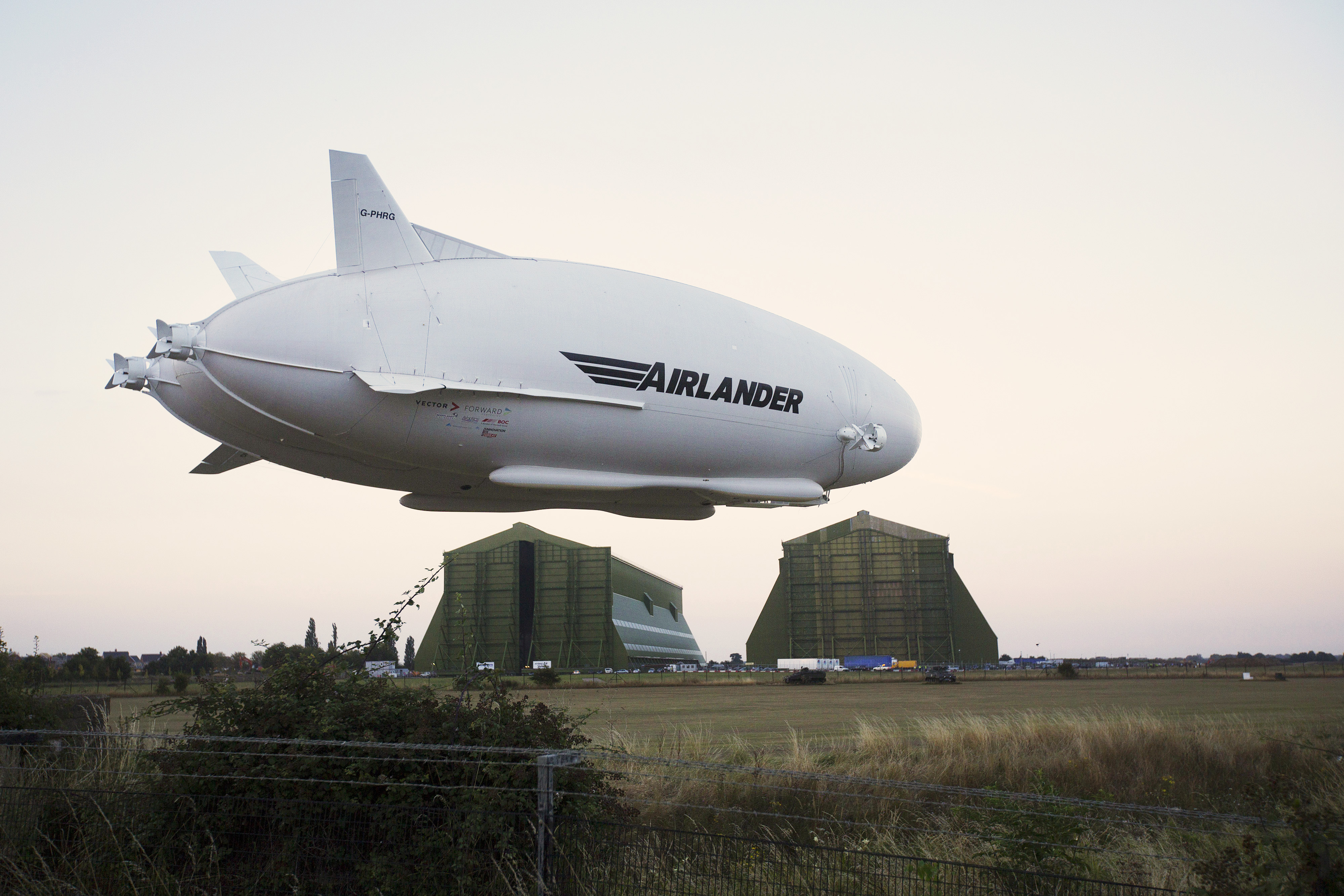
Imagine floating steady and serene over wild or intriguing landscapes, in tranquil comfort with marvellous views. The walls of your spacious observation car are largely glass, there is no vibration or mechanical roar.
Your martini is unshaken. You can walk about. Your speed is modest, but your delight is great. You have not had to depart from an irritating large airport and might touch down on water, snow, grassland or beach. You are enjoying a revolutionary new craft, the Airlander 10, a British creation currently under development by Hybrid Air Vehicles in Bedford.
It resembles a slightly bifurcated giant Beluga whale: burly, but streamlined, with four fins and six stubby, retractable legs. Its 300ft frameless hull is aerodynamic, providing lift by its profile, as an aircraft wing does. About 60% of its buoyancy comes from safe helium gas, contained in a tough, tri-laminated flexible skin (pre-war, cigar-shaped British airships stored flammable hydrogen in fragile membranes taken from cows’ stomachs).
Two of Airlander’s four V8 engines can be inclined to provide upward impulsion and short takeoffs. Initially, engines will be diesel, but the ultimate aim is electric. In both cases, emissions will be a fraction of a conventional aeroplane.
The Airlander can hold 100 passengers (fewer with double cabins or other seductive layouts) or 10 tons of cargo, or be used for disaster relief, military or surveillance purposes. Bullet holes are putatively harmless, with the gas at such low pressure it will scarcely leak.
Tom Grundy, former BAE Systems engineer, chief executive of the project since 2019 and a man of persuasive, almost messianic enthusiasm, explains that the Airlander, if widely adopted, could revolutionise short- and middle-range transport. Besides delighting passengers — ‘a way to make a journey a joy’ — he emphasises freight potential (a 50-ton version is envisaged) and transformational freedom from the infrastructure necessary for highways, ships, railways or ordinary aeroplanes. ‘It is the world’s most efficient large aircraft,’ he says.
Airlanders will not pollute the sky, progress over land and sea will be near silent and turnarounds will be quick. Flight will normally be below 10,000ft, often much lower, cruising at up to 75mph, for, if desired, up to five days (hence the bedrooms). Virtual-reality material illustrates his beguiling vision.
Exquisite houses, the beauty of Nature, and how to get the most from your life, straight to your inbox.
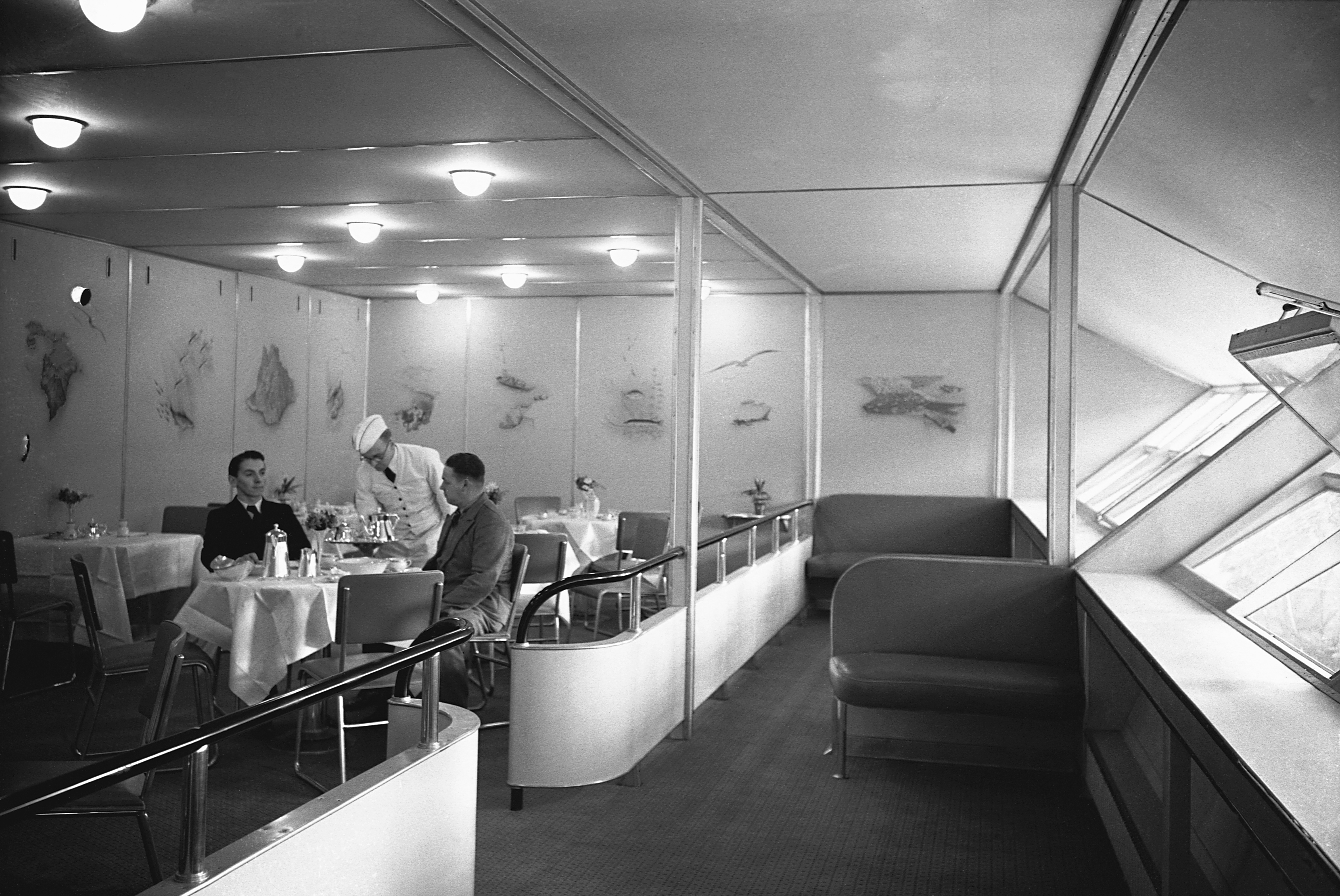
Airlander wants to re-create some of the elegance of early 20th century airship travel, which would often come equipped with dining rooms such as this one.
Frustratingly, development has taken more than a decade — the prototype flew in August 2016, but was damaged shortly afterwards — and funding hasn’t been easy, but there is now substantial commercial interest. Spanish airline Air Nostrum intends to buy 20 for experiential tourism, domestic and Mediterranean travel. French specialist Grands Espaces plans Arctic cruises and visits to ‘remote, sensitive ecosystems’. Highlands and Islands Transport has reserved six production slots.
Airlanders can cope, perhaps surprisingly, with significant wind, which they will always land into, never across, turning as needed. Veteran Scottish test pilot David Burns, who has flown airships since the 1980s and was once with British Airways, conducted Airlander’s first flights. He describes take-off, outside the monumental old airship sheds at Cardington, Bedfordshire (now used by Warner Brothers), as a ‘slow-motion version of a normal plane’.
Control responses are ‘not instantaneous, rather reminiscent of a ship’, but perfectly straightforward. Noise is ‘simply a whisper of wind’. One of the most experienced of the few airship pilots in the world, he found Airlander ‘particularly special to fly because of the astonishing views from the spacious cockpit’. The prototype cockpit is reminiscent of a large console placed within a small conservatory, rather than the crowded flight deck of most aircraft. Capt Burns’s particular pleasure is cruising silently along sunlit coasts at 1,500ft. He has developed the craft with more than 2,000 hours in a simulator.
Factory premises near Doncaster, South Yorkshire, are expected to build 24 Airlanders a year (deliveries will start in 2028), creating jobs for 1,200 people. Britain desperately needs new, world-beating products to create the prosperity and pride that its locomotives, ships and jet aeroplanes once did. Comet and Concorde gave pride without prosperity. Airlander should create both. It is hoped some of the Aerospace Technology Institute support, announced by the Prime Minister last year, will reach Hybrid Air.
Venture capitalist readers may care to invest in the company themselves. Their first flight will be cheaper, quieter and far less alarming than a visit to space with Elon Musk.
Charles Harris KC was a judge for 24 years and is the author of Trial and Error (a polemic and memoir). His interested include history, stalking, skiing, politics, mountain walking, architecture and travel. He has ridden in the Rockies, trekked in Bhutan and written on a wide variety of subjects — from national anthems to cartoons, aviation to art and sculpture, and occasionally law. He lives in North Oxfordshire with his wife Carol, and has three adult children and eight grandchildren.
-
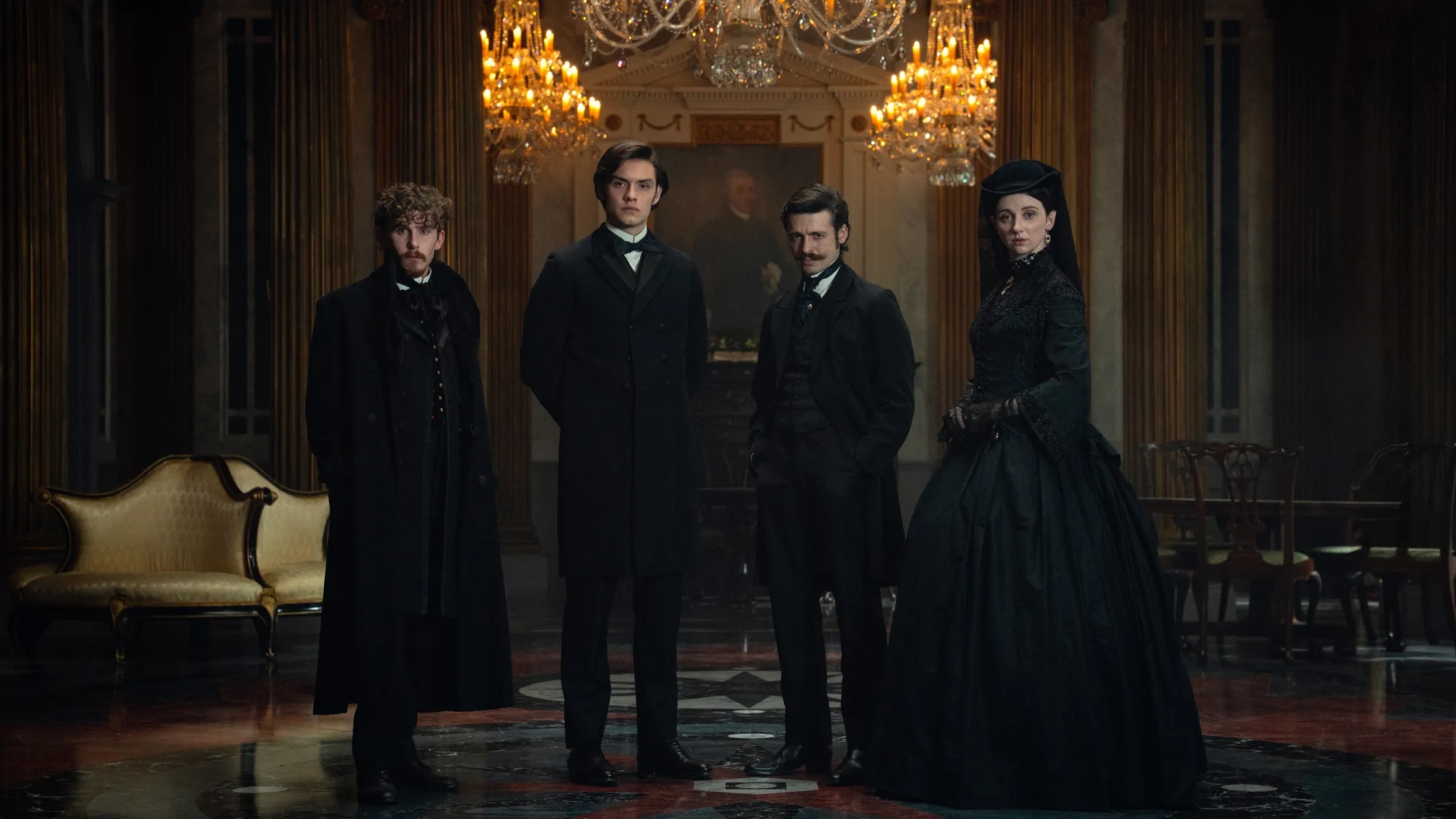 What is everyone talking about this week: Why we love period drama
What is everyone talking about this week: Why we love period dramaObservers cite a need for escapism, but Will Hosie thinks there's more to our enduring love of a period drama.
-
 The rise, fall, rise and eventual demolition of a Welsh wonder with an intriguing link to the Duke of Westminster
The rise, fall, rise and eventual demolition of a Welsh wonder with an intriguing link to the Duke of WestminsterMelanie Bryan delves into the Country Life archives and the history of one of Wales’s most extraordinary manor houses.
-
 What links myself, David Beckkam and The King? We all have an affinity for the Aston Martin DB6, a car that has been unfairly punished for not being in a James Bond film
What links myself, David Beckkam and The King? We all have an affinity for the Aston Martin DB6, a car that has been unfairly punished for not being in a James Bond filmThe Aston Martin DB6 is better than the DB5, and I am tired of pretending that it isn't.
-
 'The King of Hell was fat from gorging on souls and he expelled some more from his bowels': The many guises of the Devil Antiquity to present day
'The King of Hell was fat from gorging on souls and he expelled some more from his bowels': The many guises of the Devil Antiquity to present dayTaking as many guises as his names, the Prince of Lies turned at times into a man-devouring ogre, a mutant medley of claws, horns and wings, or the brooding rebel that lit the imagination of Romantic painters.
-
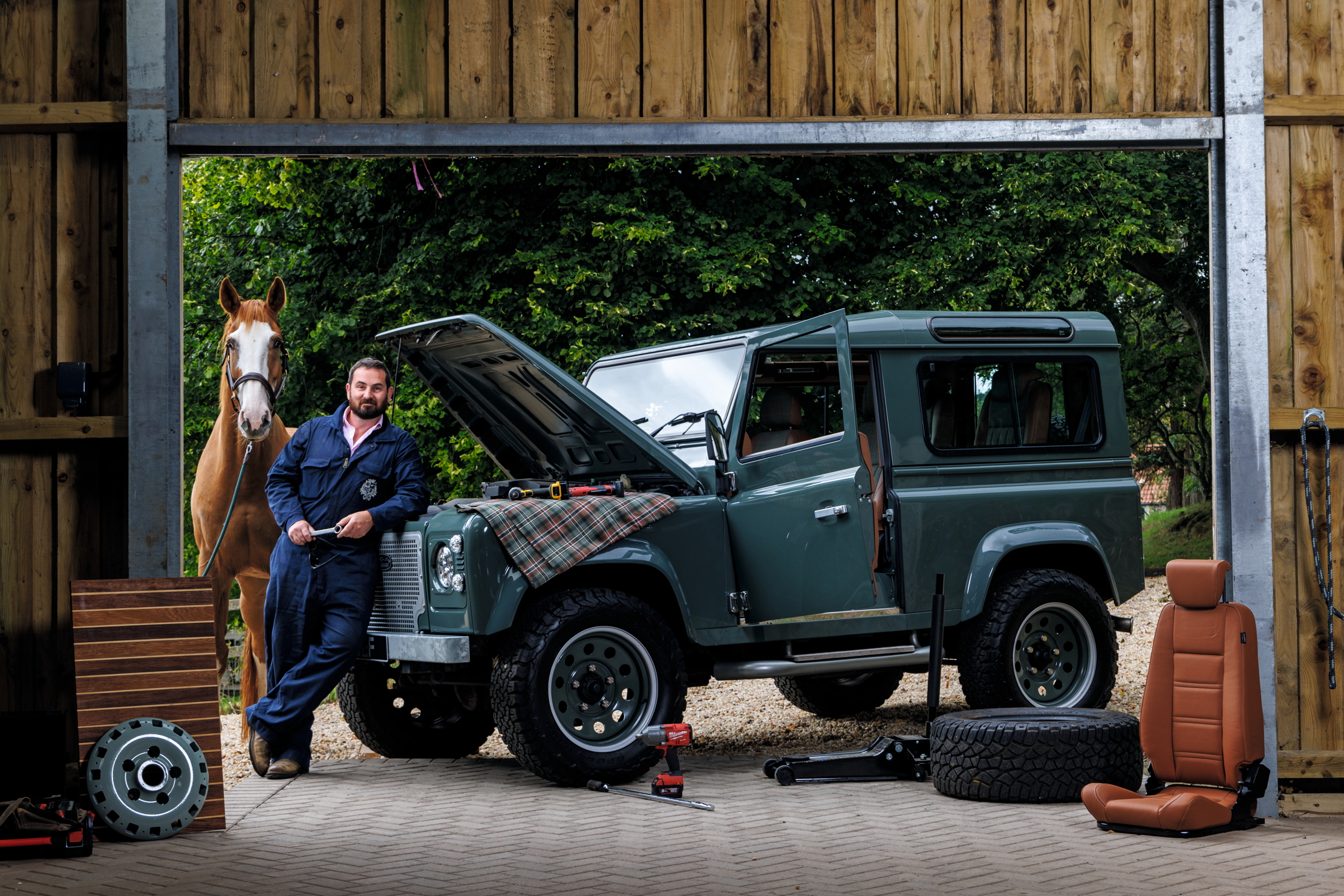 Meet the man who makes David Beckham's Land Rover Defenders
Meet the man who makes David Beckham's Land Rover DefendersLand Rover’s beloved, rattly old workhorse has gained a chic cachet in recent years — particularly when modified to suit all sorts of purposes, even transporting our David Beckham's honey harvest.
-
 The trench coat is a British fashion icon that’s been worn by everyone from brave World War soldiers to Sex and the City’s Samantha Jones
The trench coat is a British fashion icon that’s been worn by everyone from brave World War soldiers to Sex and the City’s Samantha JonesThe trench coat did not originate in the trenches, says Amie Elizabeth White, but it was greatly influenced by the World Wars, and was sported by a host of film and TV stars.
-
 A portrait featuring a string of pearls stolen in one of Britain’s most notorious jewellery heists is going under the hammer
A portrait featuring a string of pearls stolen in one of Britain’s most notorious jewellery heists is going under the hammerA portrait by Philip de László features a headline-making pearl necklace that was stolen, recovered and stolen again — and it's coming up for auction this week.
-
 ‘In my twenties I was asked by a newspaper to test out an orgasm machine. I said, "Absolutely"’: Elizabeth Day on her early career in journalism and consuming passions
‘In my twenties I was asked by a newspaper to test out an orgasm machine. I said, "Absolutely"’: Elizabeth Day on her early career in journalism and consuming passionsThe author and journalist chats to Lotte Brundle.
-
 What’s better than a date with Ali MacGraw? Tending to your waxed jacket, according to Steve McQueen
What’s better than a date with Ali MacGraw? Tending to your waxed jacket, according to Steve McQueenThis is the story of the world’s most useful jacket — and a staple in Britain's countryside homes.
-
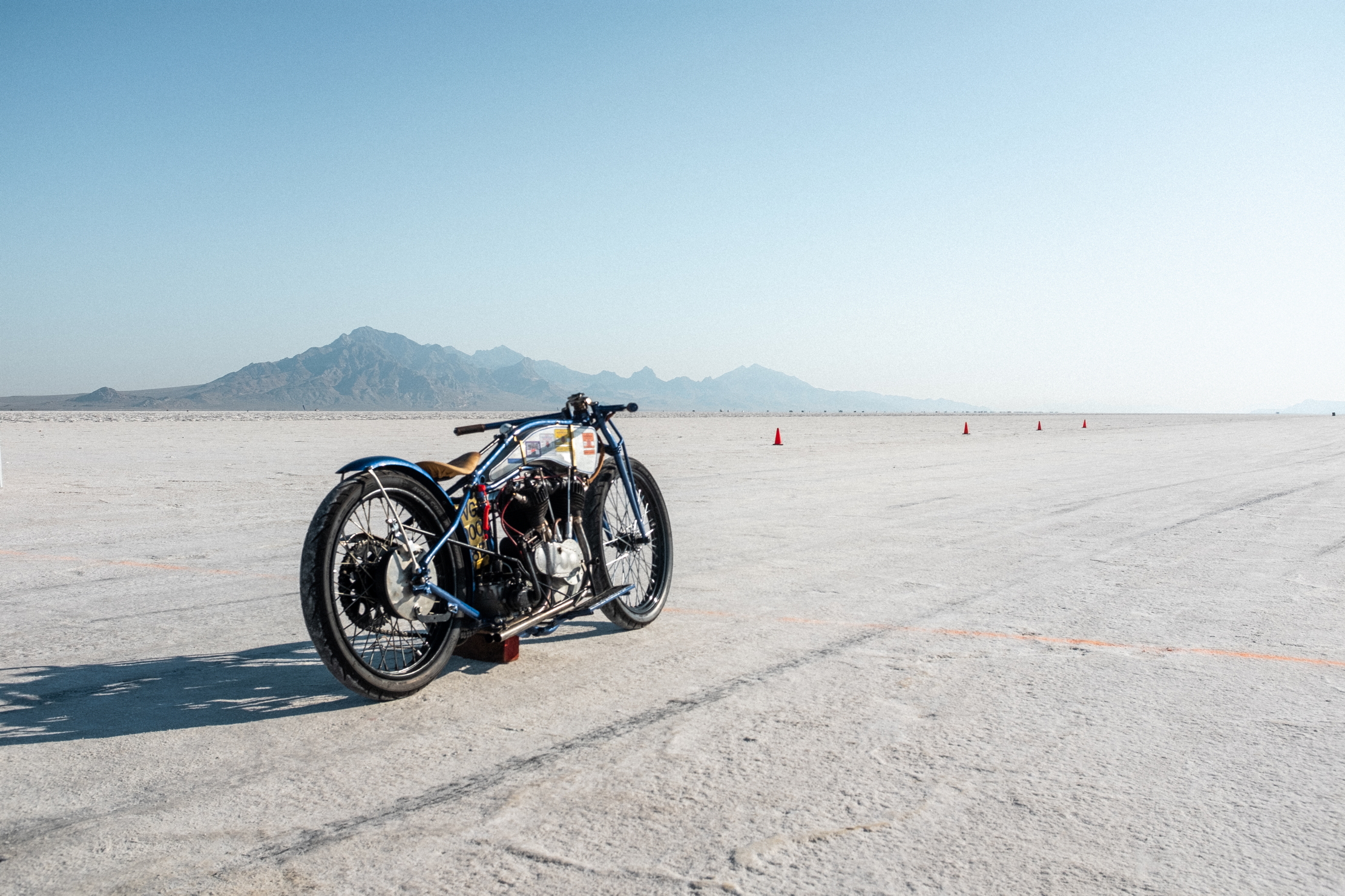 At the Bonneville Salt Flats, the only currency is speed
At the Bonneville Salt Flats, the only currency is speedCharlie Thomas reports from Speed Week, and talks to those with a bad case of 'Salt Fever'.